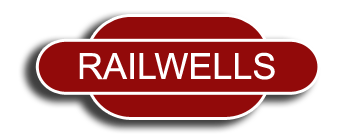We met on the 11th November and the thoughts of those present at this extremely well-attended meeting were naturally on the First World War. It was most appropriate therefore that our speaker, Nigel Tansley, had as his subject ‘ The War Department Light Railways on the Western Front‘ and we began the evening by standing for a brief period of remembrance.
Nigel began by explaining that he had been a keen railway modeller for over 30 years and it had been his building of a layout ‘Q Dump Wipers’, depicting such a railway (which incidentally exhibited at our 2013 Railwells exhibition) that had led to a deeper interest in the subject.
By way of background, Nigel stated that in 1913 it was known that both the Germans and the French were developing systems of light ‘field’ railways to a narrow gauge of 60 cm for the transport of armaments and personnel. These lines were essentially of a temporary nature and designed to be laid and altered very quickly. Once the First World War commenced, the British Army established a Railway Operating Division but this was primarily concerned with the use of main railways on the Continent. In view of the notorious mud on the front, the War Department initiated the use of light railways to ease the movement of troops, armaments and supplies along the Western Front and, despite expert opinion in Britain being in favour of a wider gauge of 2’6″, wisely chose one of 2 feet, almost identical with that being used by the German army; later in the war, this enabled captured enemy rolling stock to be used immediately without the need for any alteration. By the end of the War the light railway networks on both sides of the conflict were extremely large, the network of the British First Army alone extending to some 2,000 miles. Members were surprised to note from the photographs we saw that much of the track-laying and associated railway works were undertaken by Chinese labour.
The earliest locomotive was a strange home-built effort rejoicing in the name of ‘Scotch Express’; this appeared during 1915 and was created using the engine and other parts of an early lorry. A variety of small steam locomotives were supplied from established British builders and, later from American companies. These had the disadvantage of being conspicuous in the vicinity of the Front Line by virtue of their steam and smoke. Thus, there was a rapid development of small oil-engined tractor locomotives of 20 to 60 hp and, of these a large number of the Simplex type were built by the Motor Rail Co of Bedford. The lightest model was able to run on rails as light as 9 lbs per yard (about one tenth of the weight of the mainline railway track at the time) and thus this lightweight track could be laid and moved very rapidly. With the entry of the USA into the war in 1917 a number of American-built locomotives were added to the fleet and tnhe War Department also purchased 100 Fowler traction engines for the haulage of heavy guns and so on by road wherever possible. Nigel illustrated in some detail all the widely-varying types of locomotive and the standard range of wagons and vans, including those modified to serve for ambulance and mobile workshop uses. He reminded us that quite a number of locomotives and items of rolling stock still survived in museums and on narrow gauge heritage railways throughout the country and these were also well-illustrated. He concluded his presentation with illustrations of two most unusual forms of monorail which had been tried to convey supplies as well as wounded troops within the trenches.
Both Nigel and his wife, who accompanied him, are serving officers with the Salvation Army in Manchester and Nigel is the chaplain to the Greater Manchester Fire and Rescue Service. In a vote of thanks Chris Challis referred not only to Nigel’s fascinating and illuminating insight into a largely unpublicised but vital aspect of the First World War, but also to the also scarcely appreciated work of the Salvation Army relating to the welfare of the troops fighting at the Front.
The Chairman, Colin Price, ended the meeting by suggesting that donations, on behalf of Fraternity, should be made to both the Royal British Legion and the Salvation Army and this met with the unanimous approval of those present.

